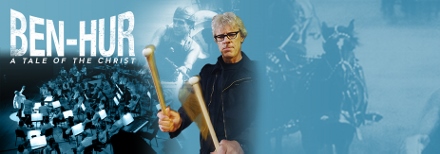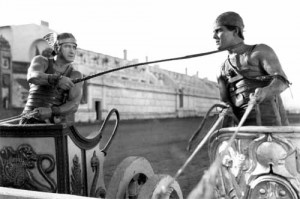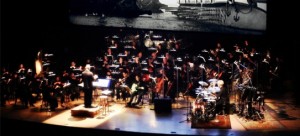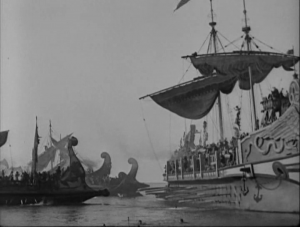HURRY TO BEN
Published in 1880, Lew Wallace’s Ben-Hur: A Tale of the Christ not only beat out Harriet Beech Stowe’s Uncle Tom’s Cabin (1852) in sales, it remained the reigning champion of best-selling books for over half a century, finally being toppled by Margaret Mitchell’s Gone with the Wind (1936). Not only does the book intersperse the tales of both Jesus and the fictional Judah Ben-Hur, an enslaved Jewish nobleman who rises to fame and riches as a champion charioteer, it serves up—among other elements—romance, revenge, redemption, religion, and a riotous race. Perfect ingredients for the cinema.
It seems that most folks think the extraordinarily popular and heavily awarded 1959 William Wyler version starring Charlton Heston is the only film treatment out there. But in 1925 director Fred Niblo delivered a version starring Ramon Navarro as the titular hero and Francis X. Bushman as Messala, Ben Hur’s boyhood friend whose blind allegiance to Rome turns him into a bitter enemy. Silent epics were all the rage, so no cost was spared. This spectacle was the biggest of all, years in production with a then-record cost of $4,000,000 (48 cameras were used just to film the amazing sea battle). At nearly 2 and ½ hours long, it’s an hour shorter than the MGM picture, yet the story is essentially the same, and the scale similarly impressive.
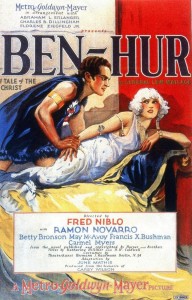 Now, Stewart Copeland, co-founder and drummer of The Police, has taken the celluloid print of the sword-and-sandal epic out of cold-storage and cleaned up the images using digital technology. (His interest began when he was hired to write a score for and narrate a 2009 arena spectacle based on the novel.) Best of all, he took the overlong silent and edited it down to 90 minutes (in all honesty, the second half of the original film dragged). Then he composed a score and is now—after about two years’ worktime—taking it on the road.
Now, Stewart Copeland, co-founder and drummer of The Police, has taken the celluloid print of the sword-and-sandal epic out of cold-storage and cleaned up the images using digital technology. (His interest began when he was hired to write a score for and narrate a 2009 arena spectacle based on the novel.) Best of all, he took the overlong silent and edited it down to 90 minutes (in all honesty, the second half of the original film dragged). Then he composed a score and is now—after about two years’ worktime—taking it on the road.
This Wednesday, March 16, he stops at the Valley Performing Arts Center in Northridge for one performance only. Orange County’s own Pacific Symphony, conducted by Richard Kaufman, will present the score while Copeland himself will play a massive drum kit and percussion of every variety—from trash cans that create the sounds of the Roman troops to a variety of exotic sound effects that evoke the Middle East of Biblical times. (Copeland actually spent his childhood years in Cairo, Egypt and Lebanon, steeped in the music of the Mid-East.)
If you think that a rocker like Copeland would seem an unusual candidate for film composition and editing, think again. In the last 20 years he’s written some truly superb scores, including Rumble Fish (not long before The Police broke up) and Wall Street, TV series (including The Equalizer), and video games. He’s also composed operas and ballets, including Noah’s Ark/Solcheeka, commissioned by the Seattle Symphony.
After VPAC, Copeland and Kaufman take the orchestra back to its home base at the Renée and Henry Segerstrom Concert Hall in Costa Mesa for two performances of the film and its new score. For sound and sightlines, you can’t beat both of these great halls, the best in Southern California.
photos courtesy of VPAC
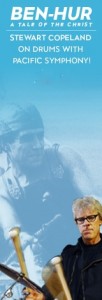 Ben-Hur: A Tale of the Christ
Ben-Hur: A Tale of the Christ
Stewart Copeland and Pacific Symphony
Richard Kaufman, conductor
Valley Performing Arts Center
18111 Nordhoff Street in Northridge
Wednesday, March 16, 2016 at 8
for tickets, call 818.677.3000 or visit VPAC
then plays with Pacific Symphony
Renée and Henry Segerstrom Concert Hall in Costa Mesa
March 18-19, 2016 at 8
for tickets, call 714.755.5799 or visit Pacific Symphony
